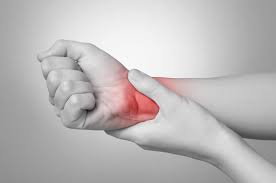
Wrist Pain
Wrist pain or injury is common and can usually be successfully diagnosed and treated by your physiotherapist. Wrist pain can occur as a result of sports injuries, work injuries or simply everyday arm use.
An accurate diagnosis is vital to the correct management of your wrist pain. Wrist pain can be caused by local muscle, tendon or joint injury. Alternatively, wrist pain can be referred from your neck joints or a trapped nerve. Carpal tunnel syndrome is the best known nerve entrapment of the wrist.
Wrist pain and injury respond favourably to physiotherapy intervention when early treatment is sought. Please do not delay in consulting your physiotherapist if you experience wrist pain. Some wrist conditions do require surgery, so early assessment and intervention is important.
Common Wrist Injuries
What Causes Common Wrist Injuries?
Wrist pain is any discomfort in the wrist. It’s often caused by carpal tunnel syndrome. Other common causes include wrist injury, arthritis, and gout.
The following conditions are common causes of wrist pain:
Carpal tunnel syndrome: the median nerve is one of the three major nerves in the forearm. Carpal tunnel syndrome occurs when the median nerve becomes compressed, or pinched. It is located on the palm side of your hand, providing sensation to the following parts of the hand:
- thumb
- index finger
- middle finger
- part of the ring finger
It also provides the electrical impulse to the muscle leading to the thumb. Carpal tunnel syndrome can occur in one or both of your hands.
Swelling in the wrist causes the compression in carpal tunnel syndrome. The pain is due to excess pressure in your wrist and on the median nerve. Aside from causing wrist pain, carpal tunnel syndrome can lead to numbness, weakness, and tingling on the side of your hand near the thumb.
Wrist swelling can occur and trigger carpal tunnel syndrome due to any of the following conditions:
- performing repetitive tasks with your hands, such as typing, drawing, or sewing
- being overweight, pregnant, or going through menopause
- having certain medical conditions, such as diabetes, arthritis, or an underactive thyroid.
An injury to your wrist can also cause pain. Wrist injuries include sprains, broken bones, and tendonitis. Swelling, bruising, or disfigured joints near the wrist may be symptoms of a wrist injury. Some wrist injuries can happen right away due to the trauma of an impact. Others may develop slowly over time.
Arthritis is an inflammation of the joints. The condition can cause swelling and stiffness in the affected part of the body. There are many causes of arthritis, including normal wear and tear, aging, and overworking of the hands.
There are many forms of arthritis, but the most common types include:
- Rheumatoid arthritis, an autoimmune disease that usually affects both wrists. It develops when the immune system mistakenly attacks the lining of your joints, including your wrists. This can cause painful swelling, which may eventually result in bone erosion.
- Osteoarthritis, a degenerative joint disease that is common among older adults. It is caused by a breakdown of the cartilage that covers the joints. The protective tissue is damaged by age and repeated motion. This increases the friction as the bones of the joint rub against each other, resulting in swelling and pain.
- Psoriatic arthritis, a type of arthritis that occurs in people with a skin disorder called psoriasis.
Wrist pain may be accompanied by the following symptoms:
- swollen fingers
- difficulty making a fist or gripping objects
- numbness or tingling sensation in the hands
- pain, numbness, or tingling that gets worse at night
- sudden, sharp pain in the hand
- swelling or redness around the wrist
- warmth in a joint near the wrist
Your doctor should also evaluate wrist pain that becomes worse or interferes with your ability to do daily tasks.
Common Treatments for Wrist Pain & Injury
With accurate assessment and early treatment, most wrist injuries respond extremely quickly to physiotherapy allowing you to quickly resume pain-free and normal activities of daily living. In Nicolina’s physiotherapy center you will receive the following treatment:
